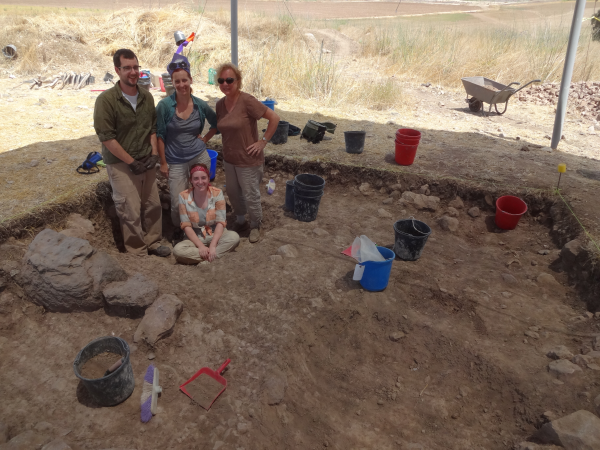by Andrea Creel
Not all archaeological excavations are created equal. As a PhD candidate specializing in Near Eastern Archaeology at the University of California-Berkeley, I can tell you that, mostly, the dirt is the dirt is the dirt. All over the world the earth yields beautiful, wonderful, exciting, mundane artifacts – jewelry, figurines, sickle blades, broken pieces of pottery, you name it. And those artifacts tell all sort of stories about the people who made those fabulous and ordinary and marvelous things, stories that are both familiar and surprising, stories that link us to them and show how different we all are, yet how much we are also the same.
So what really makes a dig, what sets one apart from another, are the people. From the director(s) to the supervisors to the excavators, who you’re digging with is the unspoken key to a successful archaeological excavation. This is why I loved my time with the Jezreel Expedition. First, there are the Directors, Jennie Ebeling and Norma Franklin. The director of an excavation sets the tone for the entire dig, and Jennie and Norma have cultivated an enriching and encouraging environment for students and scholars. Though not unheard of, it’s also still relatively rare for women to act as directors of excavations in Israel, so it’s also encouraging for a young female archaeologist like myself to have those sorts of role models and mentors in the field. Then there is Area Supervisor, Ian Cipin, whose skill and demeanor in the field made him an absolute delight to work with, as well as a great teacher to learn from – the kind of teacher that makes you feel like you’re learning from each other. Finally, there is the excellent staff and volunteers, a mixture of students, professors and interested lay people, who are just as immersed and entertained by the craft of archaeology as the things we excavated.
And that’s the best part of being at Jezreel. It’s the craft that counts. Everyone is learning. Everyone is teaching. It’s the kind of excavation that is truly set apart.


